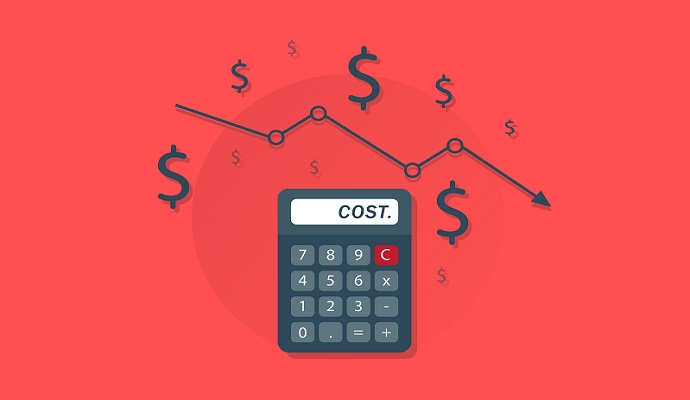National Healthcare Spending Increased to $3.6T in 2018
Higher private and Medicare coverage costs drove the 4.6% increase in national healthcare spending, while medical price growth contributed significantly, CMS actuaries report.

Source: Getty Images
- National healthcare spending in 2018 grew at a rate of 4.6 percent to $3.6 trillion, which translated to about $11,172 per person, the Office of the Actuary at CMS recently reported.
The growth rate was faster than that of 4.2 percent the previous year, but equal to the rate observed in 2016, the actuaries explained in the report published online today in Health Affairs. Faster growth in private health insurance and Medicare spending drove the 0.4 percentage point acceleration in 2018, they added.
“Health care spending growth picked up across all major payers in 2018 as medical prices grew faster, due in part to the reinstatement of the health insurance tax on all health insurance providers,” Micah Hartman, a statistician in the CMS Office of the Actuary and first author of the Health Affairs report, stated in an emailed press release. “However, economic growth outpaced health care spending and the share of the economy devoted to health care fell.”
In 2018, healthcare spending’s share of the economy, as measured by the gross domestic product (GDP), decreased to 17.7 percent from 17.9 percent the previous year.
Overall economic growth was able to outpace the increase in national healthcare spending in 2018. But the cost of health insurance still rose that year. CMS actuaries estimated that the net cost of health insurance increased by 13.2 percent in 2018.
The cost of health insurance has been on the rise. In 2017, the actuaries found that net health insurance costs increased by 4.3 percent.
The faster growth rate in 2018 was primarily driven by the health insurance tax, which policymakers reinstated in 2018. The tax requires fully insured health insurance to pay an annual fee based on premium costs and the insurer’s market share. The tax was reinstated in 2018, which required insurers to pay $14.3 billion, according to consulting firm Oliver Wyman.
Private health insurers felt the pinch from the tax in 2018. CMS actuaries estimated that their costs reached $1.2 trillion in 2018 and accounted for 34 percent of total national healthcare spending. Specifically, private health insurance spending increased by 5.8 percent in 2018, which was quicker than the growth of 4.9 percent in 2017.
Spending grew for private health insurers despite a 0.8 percent decrease in enrollment in 2018, the actuaries pointed out. Enrollment fell because of directly purchased non-marketplace and employer-sponsored plans.
Medicare spending also increased in 2018. The federal healthcare program spent 6.4 percent more, with total expenditures in 2018 reaching $750.2 billion. Medicare spending represented 21 percent of total healthcare spending.
Meanwhile, Medicaid spending increased 3.0 percent in 2018, reaching $597.4 billion and accounting for 16 percent of national health expenditures. Medicaid providers also faced a faster growth in the net cost of insurance, but that was partially offset by slower enrollment growth and spending growth for Medicaid managed care goods and services, CMS actuaries reported.
Additionally, the actuaries observed a significant increase in medical service prices in 2018. CMS actuaries found that medical price growth increased by about 2.1 percent in 2018, compared to 1.3 percent the previous year. Meanwhile, residual use and intensity growth slowed, rising by 1.3 percent in 2018 versus 1.6 percent in 2017.
Specifically, hospital prices rose by 2.4 percent in 2018 versus 1.7 percent in 2017, while use and intensity of hospital goods and services grew more slowly and growth in total inpatient days slowed at 0.7 percent. Overall, hospital spending increased by 4.5 percent in 2018 to reach $1.2 trillion, representing one-third overall healthcare spending.
In contrast, spending on physician and clinical services slowed in 2018, rising 4.1 percent compared to 4.7 percent the previous year. CMS actuaries estimated a total of $725.6 billion in physician and clinical service expenditures in 2018, with clinical spending growth (6.0 percent) outpacing physician service growth (3.6 percent).
Additionally, the report found that retail prescription drug spending increased in 2018. CMS actuaries estimated that spending on retail prescription drugs increased to 2.5 percent from 1.4 percent growth in 2017. In total, Americans spent about $335.0 billion on retail prescription drugs.
In light of rising hospital and prescription drug prices, federal and state governments have prioritized passing policies that address these growing costs. Most recently, the Trump Administration finalized a hospital price transparency rule intended to empower consumers to shop around for high-value care by putting payer-specific negotiated rates in front of them. The administration also finalized a rule earlier this year requiring pharmaceutical companies to disclose drug prices in direct-to-consumer advertisements.
Both rules, however, faced staunch industry pushback. Industry groups sued HHS over both rules, with a federal judge striking down the requirement for pharmaceutical companies.
The administration and many policymakers, however, believe greater transparency, as well as care delivery and payment reforms, will drive down national healthcare spending, which many believe is unsustainable.
